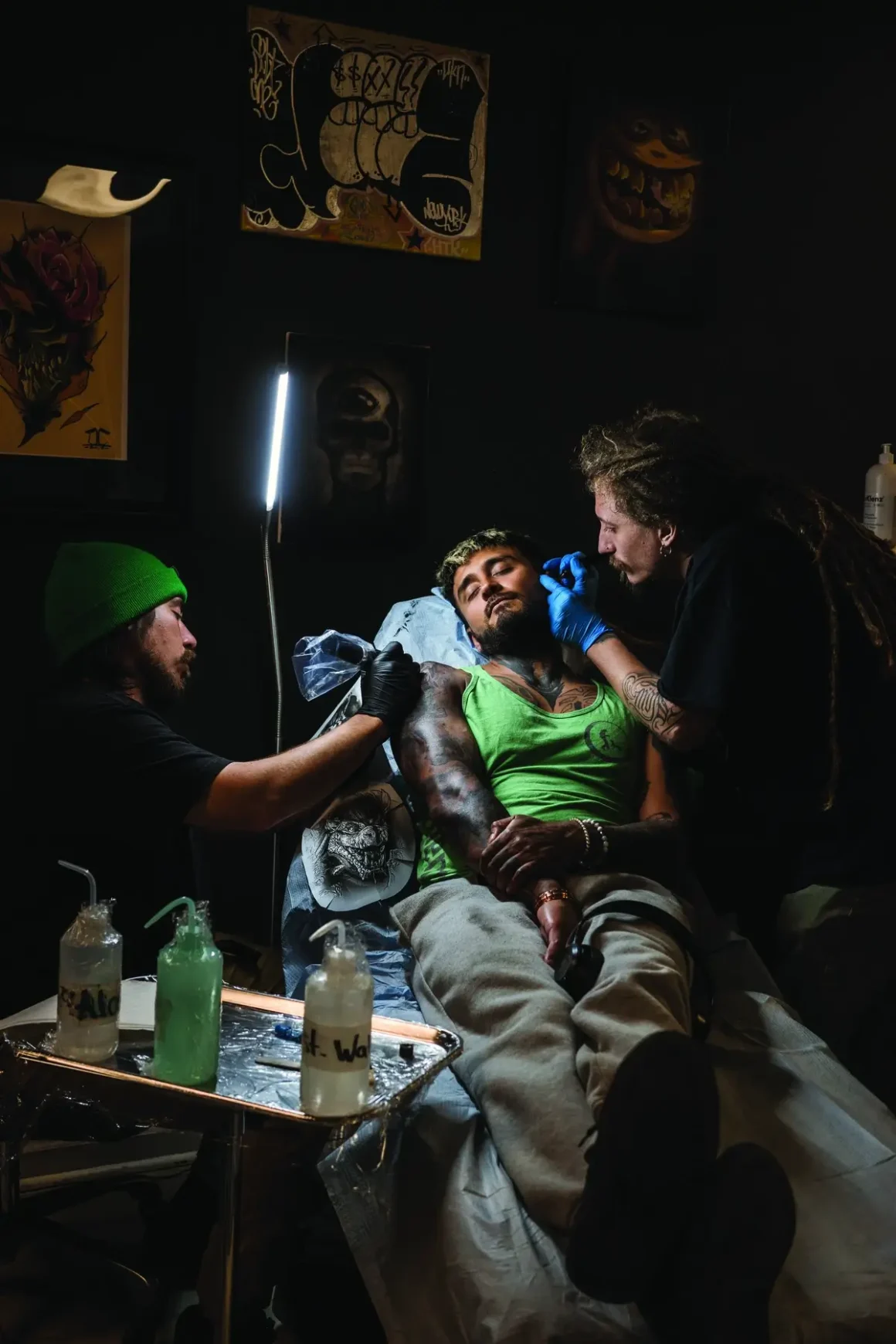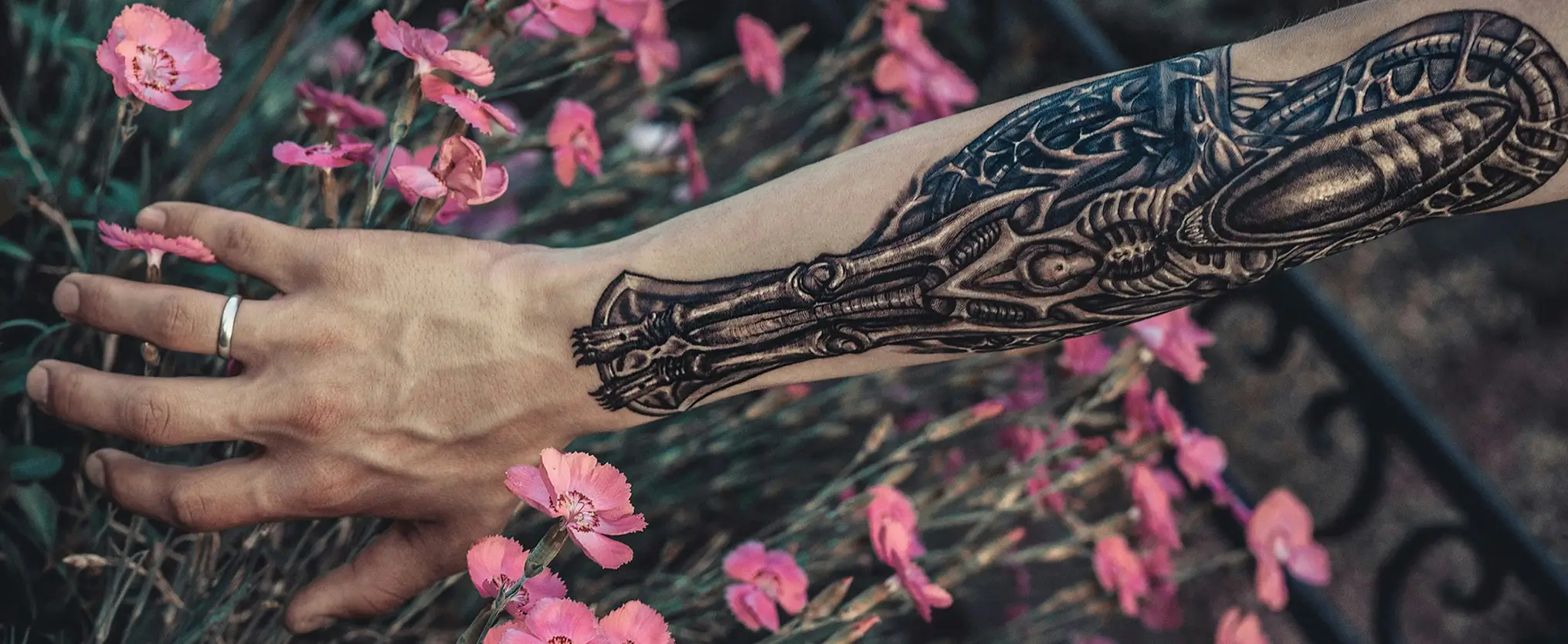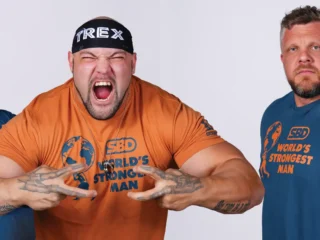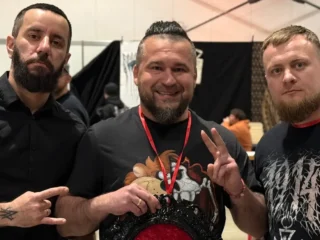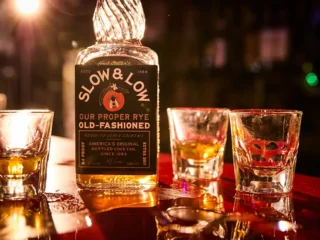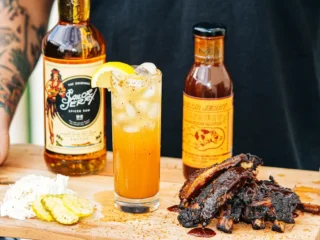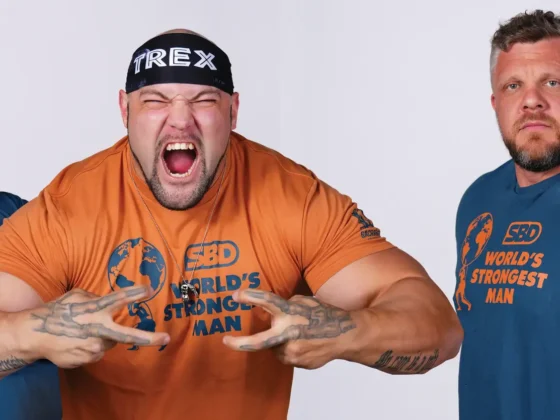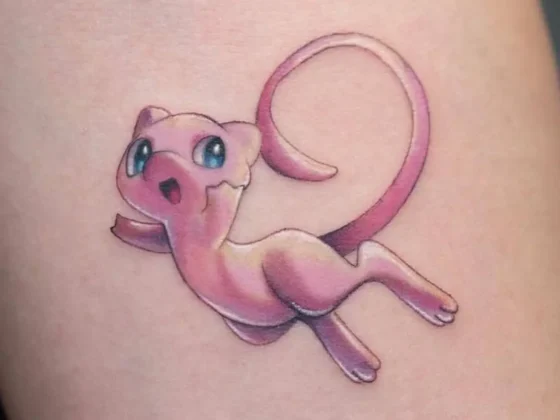Kate Daniel
October 13th, 2025
Ink’s Healing Link
Uncovering evidence of tattoos as prescriptions for pain and trauma.
After years of self-harm and resulting treatment, Grace Ogren bravely quelled her inner tempest. Yet the sight of her scars made her sad, scared, and ashamed. “Every time I saw them, I was reminded of how bad things could get… and would get some pretty vivid flashbacks,” she says. “I felt like I needed to hide them at all costs to avoid other people’s disgust and judgment, or the possibility of triggering someone… I felt contaminated.”
Eventually, Ogren sought her first tattoo— a meadowlark bird framed with daisies and tulips — to transform some of those scars into an emblem of perseverance, recovery, and acceptance. “It felt very empowering and like I was taking back control of the narrative,” she says. “It’s like a visual sign of moving beyond what had happened and making something good and beautiful of an ugly time. It gave me a sense of closure.”
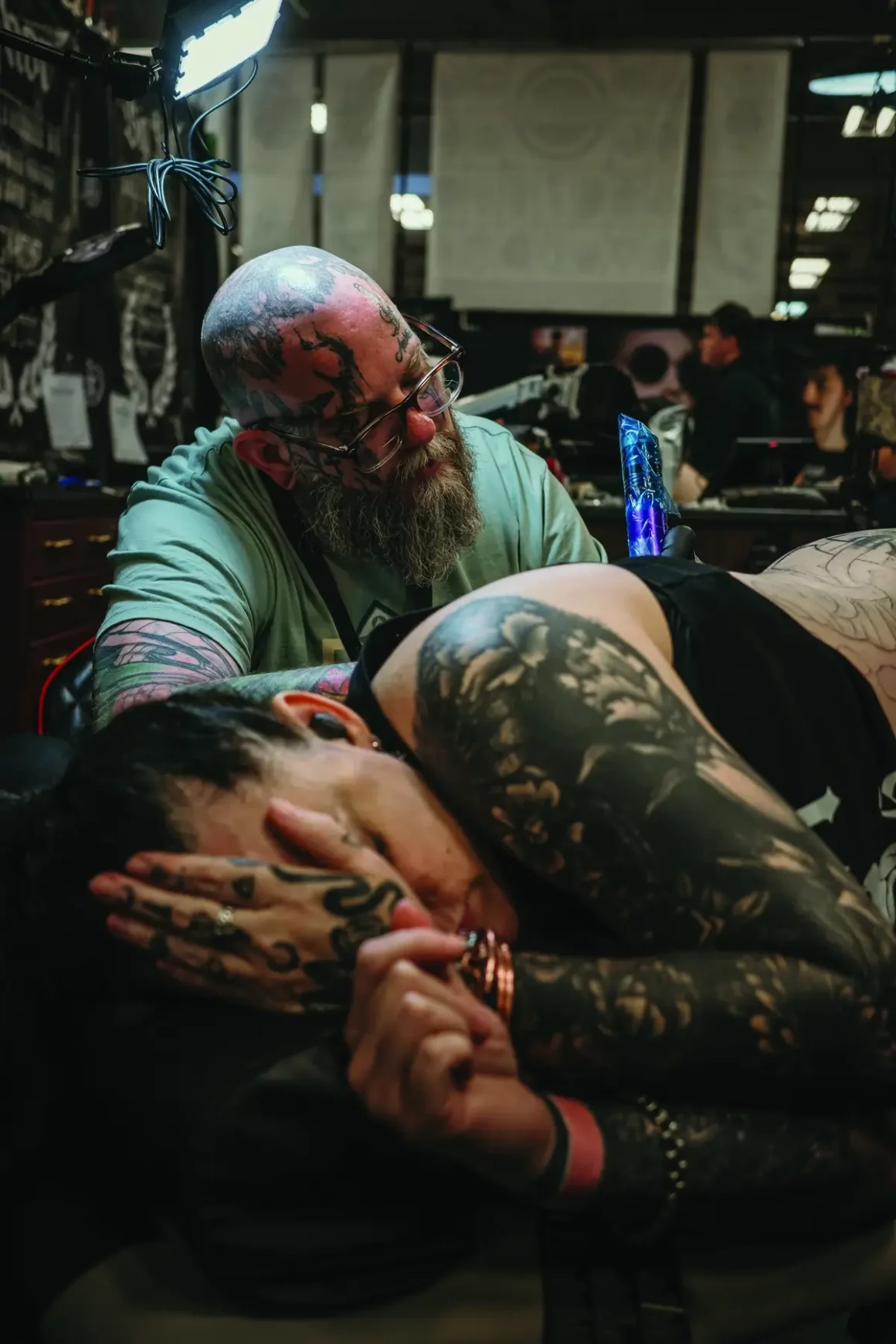
Historical Significance
Ogren is hardly an anomaly. Many trauma survivors find that tattoos and the act of receiving them are therapeutic, says Scott Giacomucci, DSW, LCSW, director and founder of the Phoenix Center for Experiential Trauma Therapy, which offers specialized support and action-based, experiential approaches to help those grappling with trauma, grief, loss, and addiction.
“Trauma and tattoos have been intimately connected throughout history,” says Giacomucci, who created a YouTube series exploring the topic. Among other purposes, from aesthetics to religious rites, tattoos have historically served an important role in healing, remembrance, and recovery for various global cultures.
In 1991, tattoos were discovered on Ötzi the Iceman, a 5,300-year-old mummified man, and are thought to be medicinal, according to tattoo anthropologist Lars Krutak. And in the context of modern American history, Giacomucci says tattoos first gained popularity among communities, including inmates, military members, sailors, and activists, who happen to have higher rates of trauma. Even more recently, groups such as survivors of 9/11 and Hurricane Katrina have turned to tattoos to cope with “collective trauma.”
Today, Giacomucci says, a broad swath of the population uses body modification to help externalize internal pain, memorialize loss, reclaim bodily autonomy, or enhance self-image. “Many experience tattoos as a protective armor, a meaningful reminder of values or past adversity, an expression of growth, or an embodiment of meaning-making from past trauma,” he says, adding that tattoos can also challenge stigmas and empower survivors to control their own narrative. Although not every artist or recipient names it as such, the concept has gained traction, along with terms such as “therapeutic tattooing” and “ink therapy.”
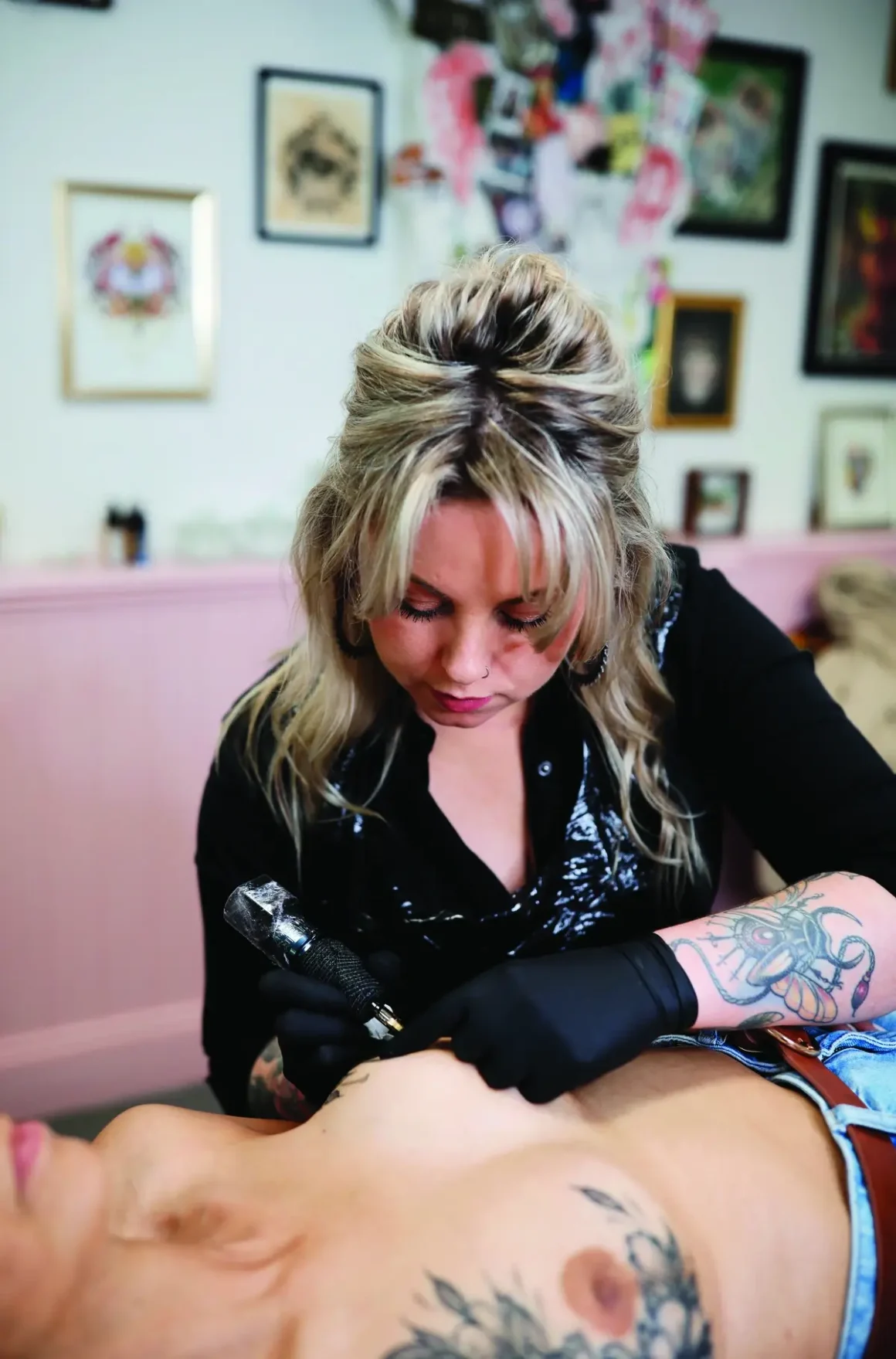
Examining Impacts
Over the past two decades, several qualitative studies have demonstrated what many already know of tattoos’ healing potential, Giacomucci says. For example, in a study published in 2025 in the American Psychological Association’s “Traumatology,” researchers interviewed six survivors of violent crimes. “Each participant described how tattooing was a means to tell one’s story, a form of meaning-making of one’s experience, and a source of agency to reclaim one’s body, power, and control over their lives,” researchers wrote.
Another study, published in 2020 in Taylor & Francis Group’s “Deviant Behavior,” analyzed personal accounts of trauma survivors in different countries. Researchers concluded that tattoos appeared to be a personal coping mechanism and “cultural practice of meaning making.” And a retrospective study published in 2025 in the National Library of Medicine’s “Stress Health” found tattoos helped combat soldiers express and process their emotions related to military service. Tattoos also promoted positive feelings and served as an “empowering, promoting, and strengthening resource” expressing transformative change, researchers wrote.
“Tattooing has become a vital part of my recovery,” says Justin Lanes, a retired U.S. Air Force Master Sergeant who served in multiple combat zones during his 23-year career. Like many veterans, Lanes had long shouldered his emotional and psychological pain in silence due to stigma and security-related scrutiny. He says his tattoos, of which he now has several, have helped him to express and reframe that pain. “What started as symbolic expression has evolved into a powerful process of somatic healing, reflection, and reclaiming my story — a way to mark what was once invisible and move forward with purpose,” he says.
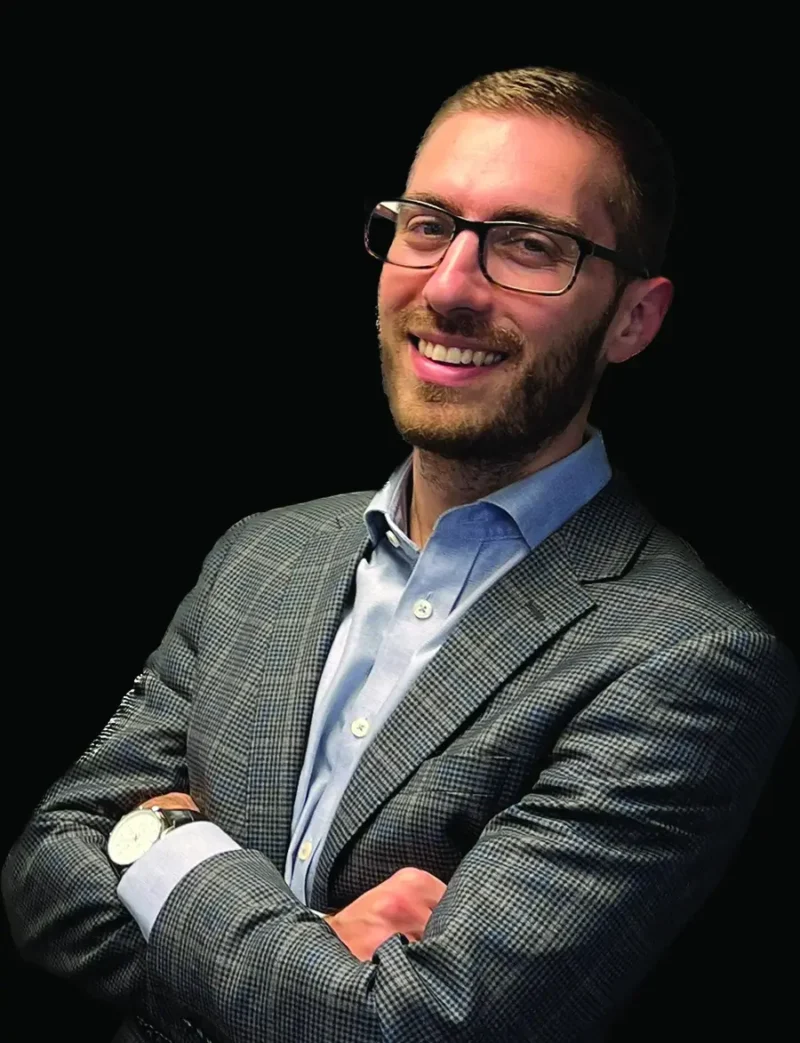
Artists’ Insights
For Natasha Ellis, a semicolon perched atop a rainbow-colored water droplet surrounded by black birds signals her decision to not only live but live vibrantly. “I felt so liberated and proud of my journey that I am still here 10 toes down,” says Ellis, who survived addiction and attempted suicide after years of childhood sexual, emotional, and physical abuse, among other traumas. Her second, an anchor with the words “to thine own self be true,” commemorates 20 years clean from narcotics.
“I’ve sat with people carrying invisible wounds of grief, abuse, addiction, loss. I’ve watched them transform their pain into something meaningful through ink,” says Marlo Kaleookalani Lualemana, owner of Earthbound Tattoo Studio in Sand City, California. Herself a sexual assault survivor, Lualemana speaks openly of her experience to clients, helping them feel seen, safe, and empowered. “I’ve seen tears fall as people reclaim parts of themselves that they thought were lost. For many, this process is the first time they’ve felt control over their own bodies. There’s something sacred about that.”
Like Ogren, many also seek tattoos to facilitate more corporeal transformations. “Instead of having a permanent reminder of trauma, they get to choose what story their skin tells,” says Ruby Gore, owner of Black Thorne Tattoo in Portland, Oregon. “I’ve seen clients who say the tattoo is what’s preventing them from going back to self-harm. It becomes this tangible reminder of their strength and growth,” says Gore, who is also the founder of Survivor Tattoo Project: Out of the Darkness, a nonprofit that provides one free trauma-related tattoo a month to survivors of self-harm, abuse, assault, and violence.
Such was the case for Dylan Cotter, who began self-harming after years of trauma, which included abuse, violence, and discrimination. He chose his first tattoo, an anchor on his forearm, to help him stop cutting, and as a reminder of the focus, grounding, and strength he’d need to go forward as an out, gay, transgender man. “I knew that if I had someone else’s art on my body, I’d begin to hold myself in a higher regard because I wouldn’t feel right about damaging someone else’s art versus my body,” he says. “Getting tattooed at that point in my healing journey was a much-needed catalyst for my self-worth to grow and one of the best things I have ever done for myself on my healing journey.”
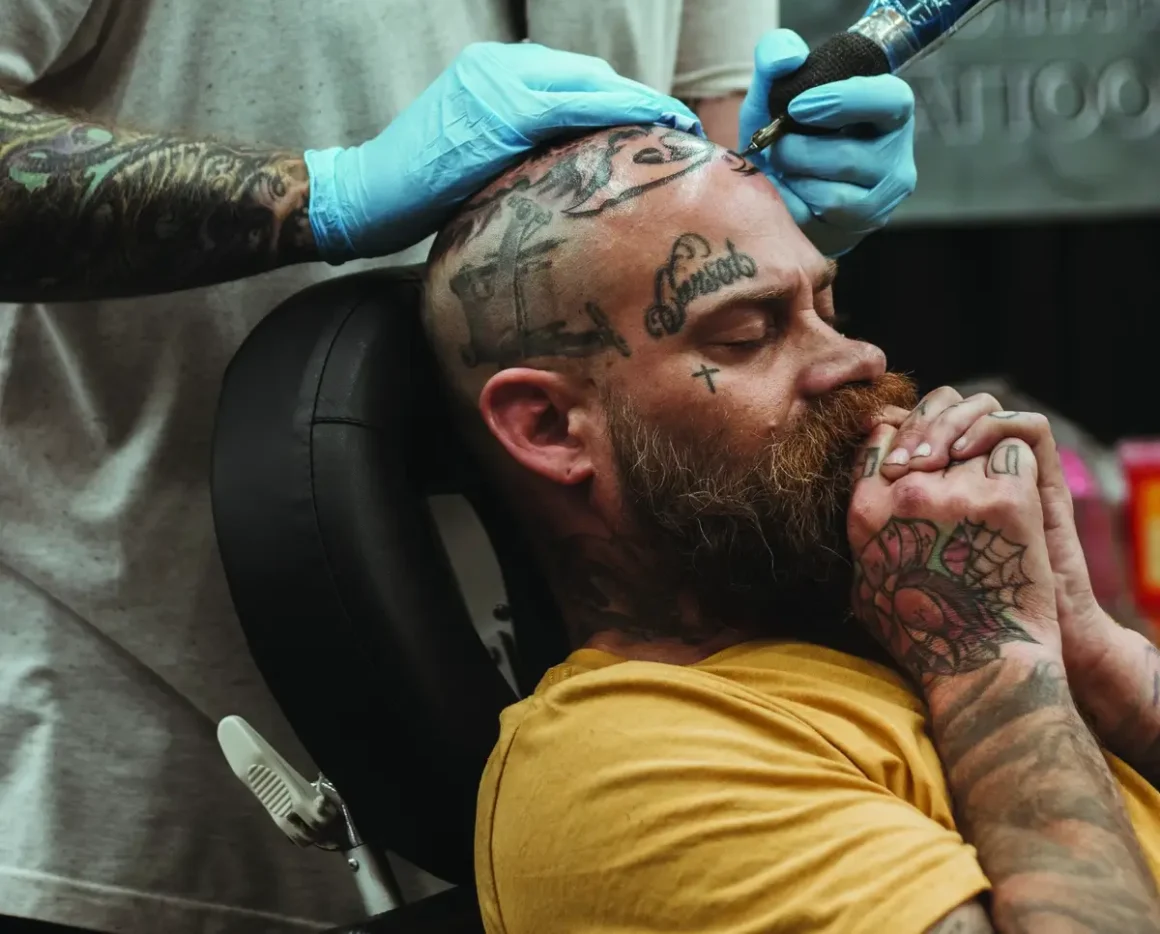
Tanya Buxton, owner of Paradise Tattoo Studio in Cheltenham, England, and founder of the Mastectomy Tattoo Alliance (MTA), has also witnessed the transformative power of tattoos firsthand. “Whether it’s a nipple tattoo, scar cover-up, mastectomy or top surgery tattoo, or even a tattoo that signifies something someone has overcome, like a trauma, illness, or body confidence issues, tattooing’s impact on people is incredible,” says Buxton, who specializes in medical and therapeutic tattoos for various communities, including nonbinary and transgender people and those affected by the BRCA gene, breast cancer, and burn injuries.
At MTA, Buxton trains fellow artists in mastectomy and top surgery-related tattoos, and helps clients find trusted, skilled providers and pay for their services. “In a person’s healing journey, (a tattoo) can almost signify a bit of a closure of that chapter,” she says. “It allows people to move forward, and restores them back to their former self, if you like. It’s an incredible milestone moment to be part of.”
The act of receiving a tattoo, from conceiving a design to the “conscious suffering” of ink in skin, and tender, meticulous aftercare, can be integral to recovery as well, Giacomucci says. It’s something many artists, including Gore, Lualemana, Buxton, and Leilani Parker, owner of Legendary Artistry in Chandler, Arizona, routinely witness in their studios.
“While many clients come to me requesting trauma-related tattoos, I’ve learned that it’s often not just about the tattoo; it’s about the experience. The act of getting tattooed can be deeply healing,” says Parker, who, like Lualemana, shares her own experiences with trauma to support her clients. “It’s the time we spend together, the attention and respect of the detail, the conversations we share, and the intention behind each piece that make the process just as important as the final result. Tattooing becomes a form of therapy. It’s not about the needles on the skin, but release in healing.”
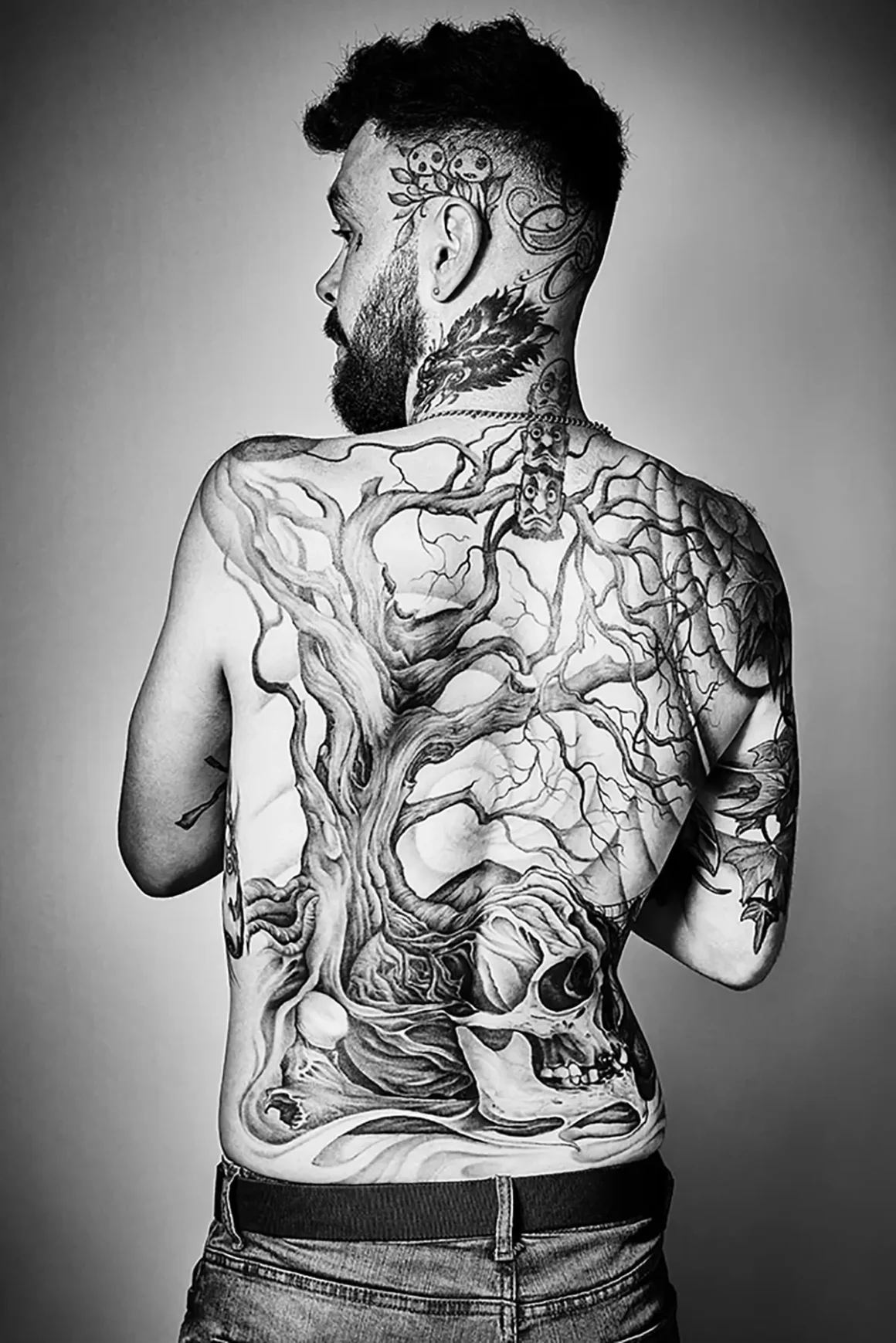
Kat O’Hare, a mental health counselor and owner of Gully’s Tattoo and Goods in Hull, Massachusetts, agrees. “I always joke that the only difference for me (between tattooing and therapy) is whether I can bill your insurance. But in all seriousness, there’s a lot of overlap in the skills required,” she says, noting that she recognized tattoos’ therapeutic effects early in her career. “I watched clients come in unsure or critical of their bodies, then leave with a totally transformed sense of self,” she says. “In one session, I could often see more of an emotional shift than I had working with my therapy clients for months.”
At times, O’Hare says tattooing, when done appropriately, can even mirror aspects of exposure therapy. “This means we reintroduce their body to physical sensations in a safe, consensual way. After trauma, being in one’s body can feel overwhelming, leading some to dissociate,” she says. “The controlled pain of tattooing, when done in a supportive environment, can help them reconnect to themselves.”
Arborist James Woods was aware of this potential when working through post-traumatic stress from a “freak accident” in which a fallen tree had crushed him, breaking several bones and shattering his sense of physical security. In addition to multiple surgeries, years of physiotherapy, and counseling, he commissioned a trusted friend and tattoo artist, Kane Kelly, to aid in his recovery. “I got the tree tattoo, one, as a reminder of what I’ve gone through and with hard work what I can achieve, and two, my back was a massive trigger point for my PTSD,” he says. “Thanks to having the tattoo done, I can now handle my back being touched without it sending me over the edge.”
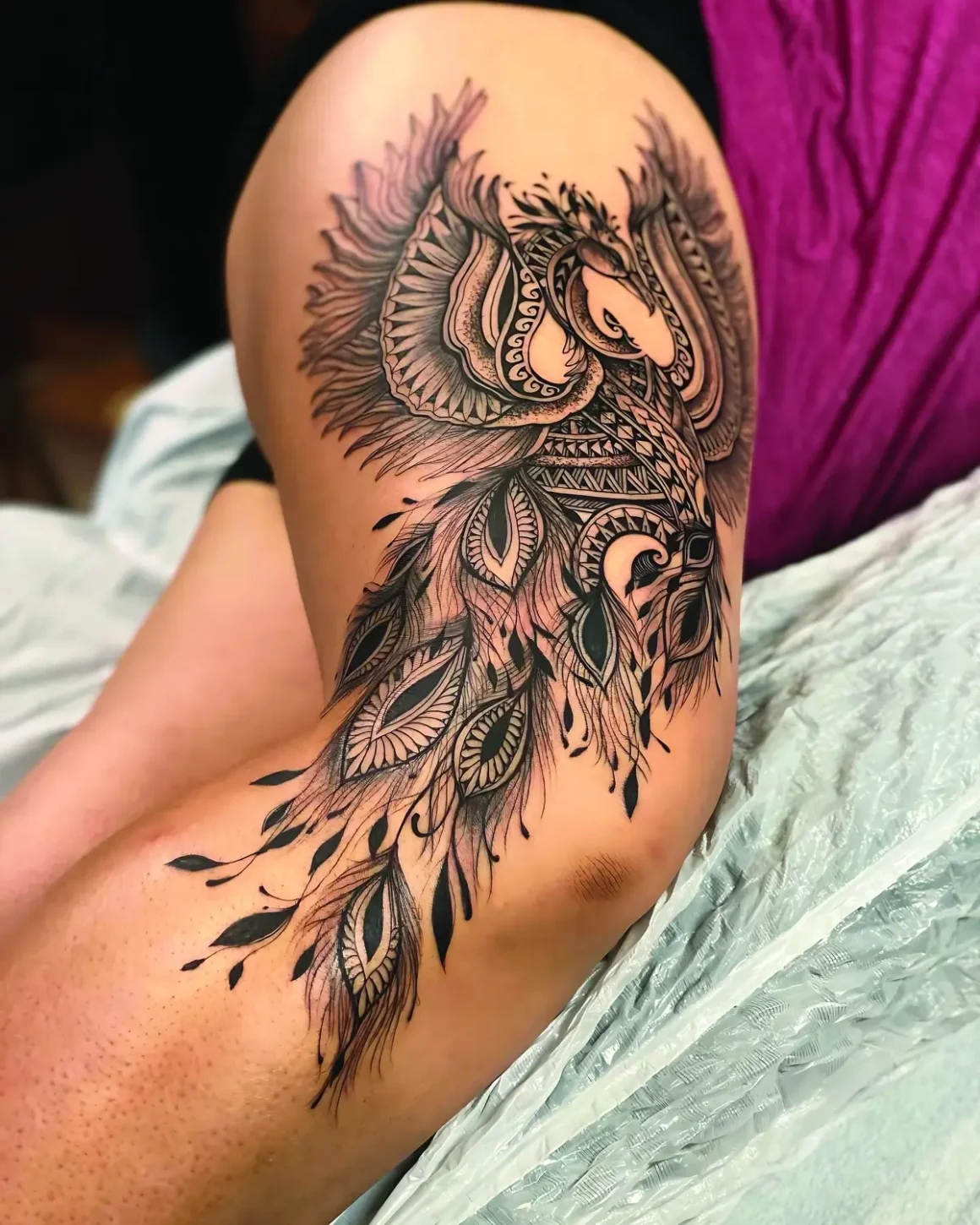
Handle with Care
Importantly, O’Hare says, tattoo artists bear an immense responsibility to exercise great care and caution when working with trauma survivors, as not doing so could risk re-traumatization. Gore, Buxton, Lualemana, and Parker are keenly aware of this, noting that they feel honored to be chosen as part of their clients’ recovery, and have intentionally designed their studios to feel safe, warm, and inclusive. “It’s incredibly humbling,” Gore says. “The level of trust they place in me is something I don’t take lightly.”
For those considering a trauma-related tattoo, Gore says that, besides finding an experienced, compassionate, and trauma-informed artist, the most important thing is to ensure the decision is empowering, not impulsive. “This should be something you’re doing because you’re ready to move forward in your healing journey, not because you’re trying to escape or hide from something,” she says. “Take time to really think about what you want the tattoo to represent… Understanding your ‘why’ will help ensure the experience is meaningful and empowering. But also remember that choosing a design because it looks cool and it’s what you want to wear forever is just as valid a choice.”
